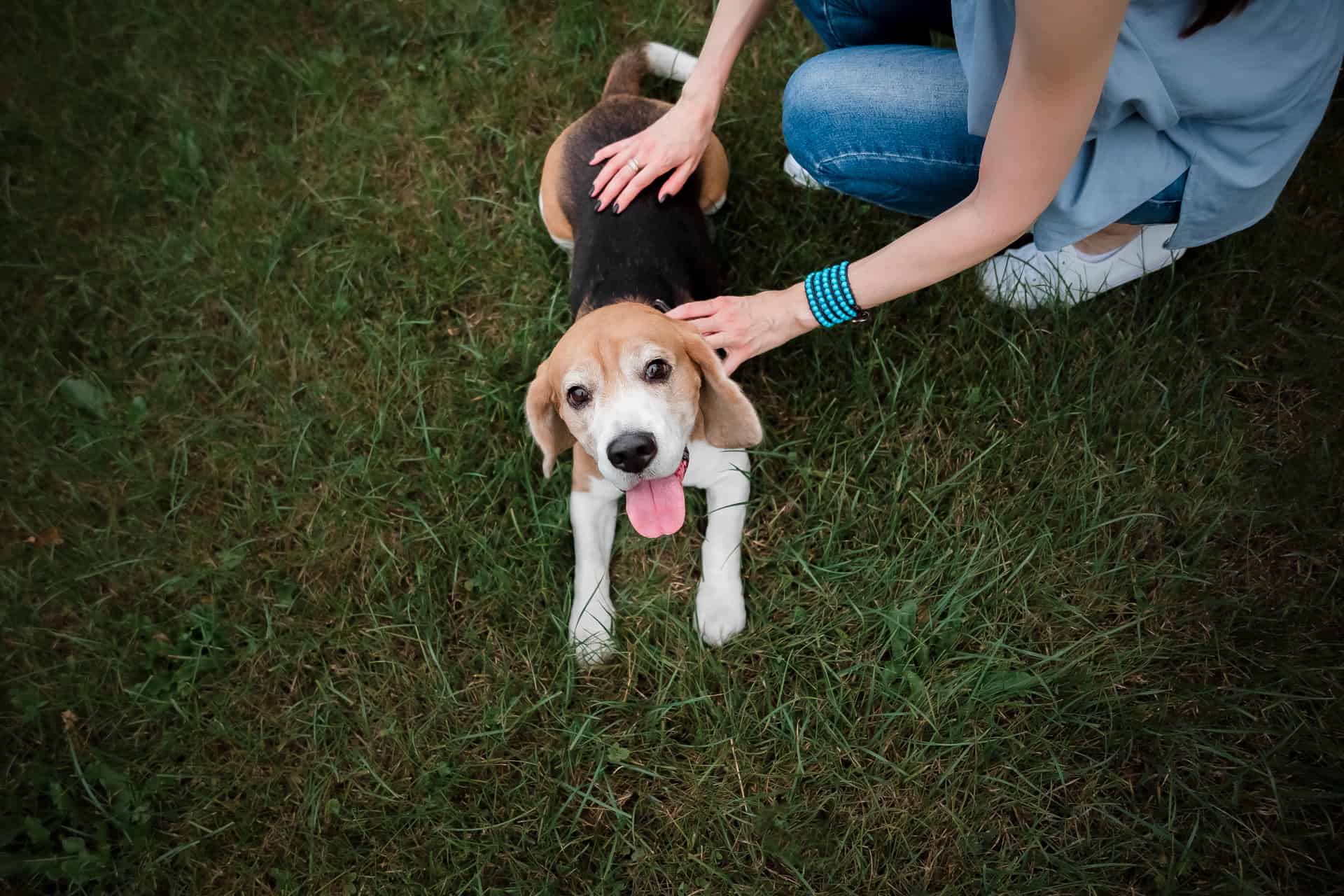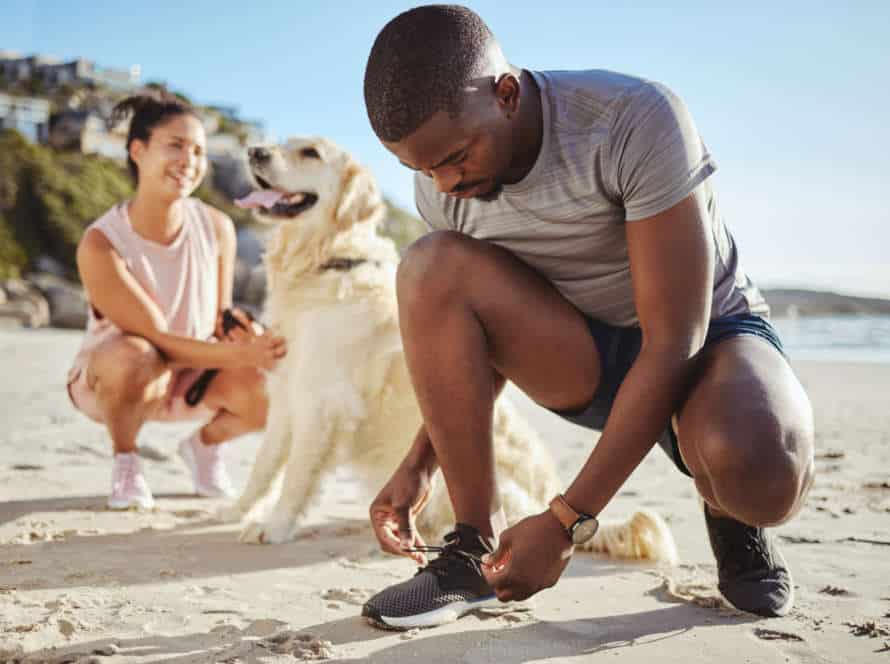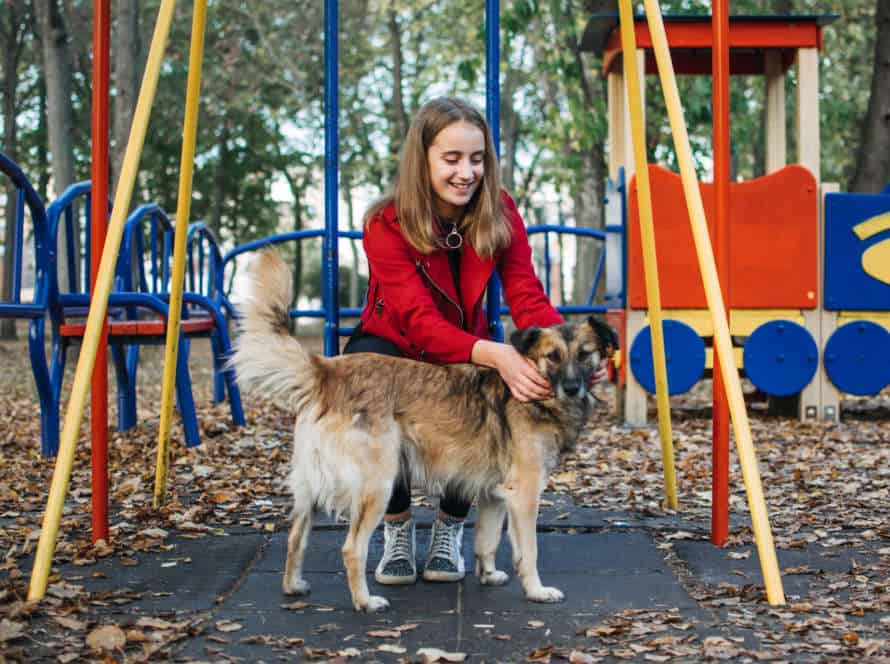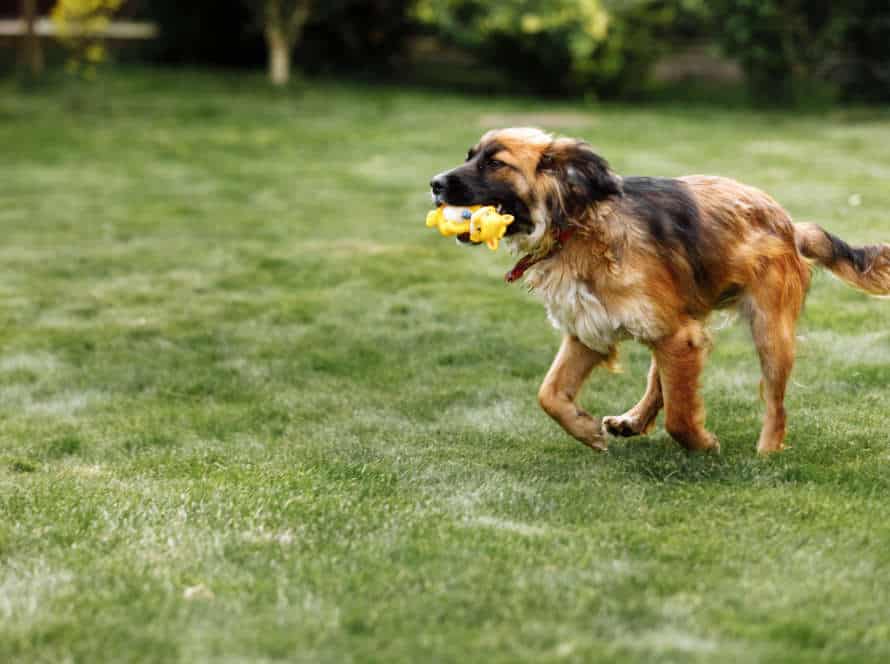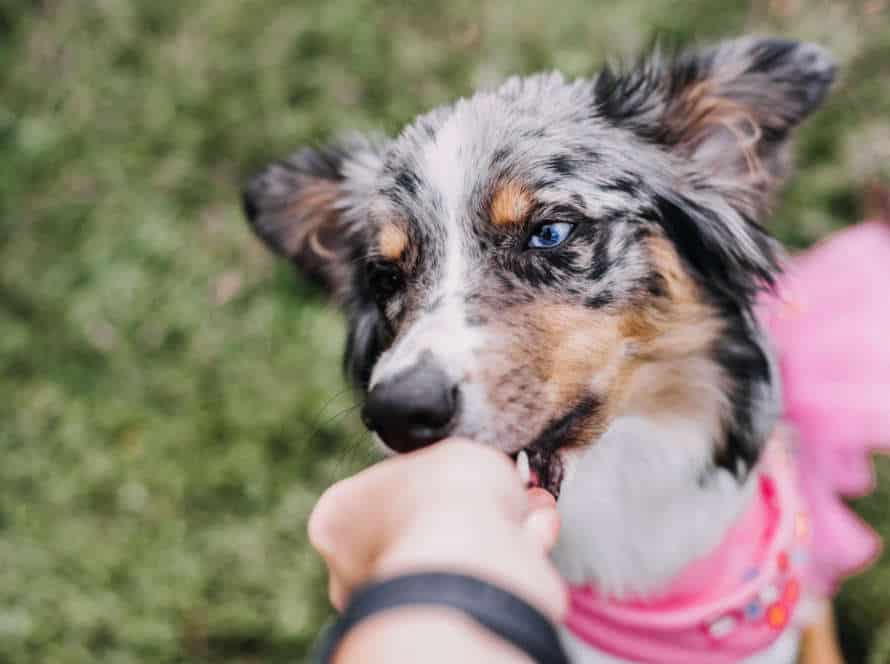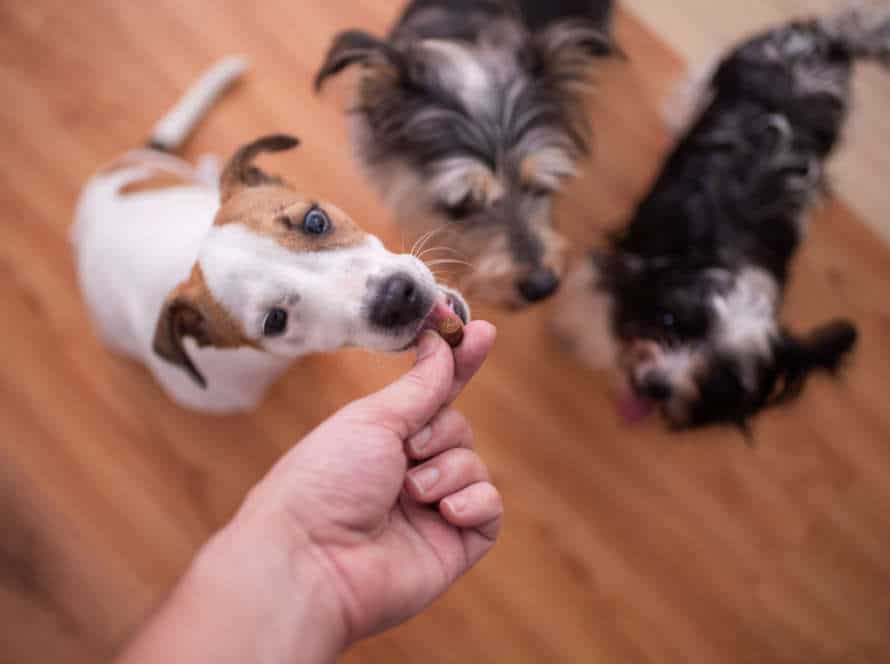Understanding Your Rescued Dog’s Past
Rescuing a dog? It’s key to know their past! Uncovering the history of your pup helps build trust and connection. Knowing their story prepares you to provide the right care and structure.
Here are the steps for understanding your rescued dog’s past:
- Start with basic information, such as where the dog was found or rescued.
- Collect any background information that the rescue or previous owner can provide, such as health records and any behavioral or training issues.
- Observe your dog’s behavior and temperament to better understand their personality and triggers.
- Consult with a veterinarian or professional dog trainer for specialized knowledge and guidance.
Possible abuse or neglect
Rescued dogs often endure neglect or mistreatment, which can cause behavioral problems. Here are some signs to watch out for:
- Physical – scars, fur matting, malnourishment, and deformities.
- Behavioral – fear or aggression, separation anxiety, and excessive barking/whining.
If you think your pup’s been abused, be gentle and patient when trying to build trust. Get help from a vet or trainer to create a unique plan for your pup’s needs. Show kindness and patience through the process since gaining trust takes time and consistency.
Pro-tip: Positive reinforcement is a great way to help mistreated dogs with issues.
Shelters and foster homes
Bringing home a rescued pup? It’s important to know they may have gone through tough times. Shelters and foster homes provide a safe space for them before they find their forever home.
Here are three benefits of these places:
- Temporary homes for mistreated or abandoned dogs, offering a safe and steady environment for them to heal from any physical or emotional trauma.
- Working with vets and animal behaviorists to identify any health or behavior issues the pup might have. Gives you understanding – and the ability to help address their needs.
- An opportunity for socializing with other dogs and humans – helping them become more trusting around people.
Adopting a rescued pup from a shelter or foster home gives them a second chance and a loving home.
Physical and emotional scars
Rescued dogs often have physical and emotional scars from their past. To build trust with them, it’s essential to understand and address these.
Physical scars may be wounds, missing limbs, or other visible injuries. Give them proper medical care, like regular check-ups, medication, and special diets. This helps heal and ease their pain.
Emotional scars can be fear, anxiety, aggression, or withdrawal. Address these by creating a safe and consistent environment. Use positive reinforcement, exercise, and mental stimulation.
Building trust takes patience and understanding, but with time and effort, you can help them heal and form a loving bond.
Pro tip: If the emotional scars are affecting quality of life or your safety, seek professional help from a dog trainer or behaviorist.
Developing a Foundation of Trust
Building trust with your rescue dog is key to their successful transition into your home. This takes more patience and time than a puppy, as trust must be earned. To create a foundation of trust, take the time to understand your pup, give consistent structure, and lots of positive reinforcement.
Here’s a guide on how to achieve trust with your rescue pet:
Patience and consistency
Gaining trust with your saved pup needs both patience and constancy from you. Each pet is special and may have diverse encounters, anxieties, and attitudes. Here are some tips to construct trust with your new dog:
- Give lots of space and time for adjustment to their new environment and timetable.
- Give treats, rewards, and positive encouragement for good acts.
- Have a regular pattern for meals, strolls, and recreation.
- Talk gently and quietly to your pup, abstain from abrupt movements and loud noises.
- Be calm and change to your pup’s development, knowing that gaining trust takes time.
Remember, your rescued pup needs your love, attention, and patience to fit into the new life with you. Through patience and reliability, you can build a strong base of trust which will be useful for both of you. Pro tip: Keep in mind each dog may learn and change differently, so watch out for your individual pup’s requirements and modify your training techniques as necessary.
Positive reinforcement training
Positive reinforcement training is a great way to encourage good behaviour in dogs. It builds trust, which is crucial for forming a bond with a rescued pooch. To do this, you need to give rewards and praise for desired behaviour. Unwanted behaviour is ignored or redirected.
Here are some tips for using positive reinforcement training with a rescued dog:
- Start with simple commands like “sit” and “stay”. This sets a routine.
- Be consistent with rewards and praise, so your dog knows what’s expected.
- Give high-value treats or toys to reinforce good behaviour.
- Avoid punishment or negative reinforcement – this could destroy trust.
Positive reinforcement training is an effective way to build trust with a rescued dog and boost your relationship.
Time for bonding activities
Spending quality time with your rescued pup is a must to create a trusting bond and cheerful life together. Here are some activities to get you started:
- Daily Walks: Not only do they give physical exercise, but also let you explore different places and build a companionship bond.
- Playtime: Toys, fetch, tug of war, etc. stimulate their brains, energy, and obedience.
- Grooming: A comb, brush, or clippers help build trust and comfort with constant touch/handling.
- Training Classes: Obedience classes help you learn together and build trust with positive reinforcement techniques.
Pro Tip: Be patient and communicate. Reward good behavior and take time to understand each other’s needs and preferences.
Overcoming Common Trust Issues
Building trust with a rescued pup can be tough. These dogs may have gone through traumatic experiences, leading to behavioral issues, distrust of humans, and other challenges. But, trust can be established! This guide will look at the usual trust problems in rescued dogs and how to conquer them.
Fear and anxiety
Fear and anxiety are all too common in rescued pooches due to their pasts. Building trust can be tricky. Here are some helpful hints to overcome trust issues and build trust with your newly rescued pup!
- Create routine: Make feeding, walking, and playing habits that are predictable. This will make your pup feel secure.
- Respect boundaries: Let your pup come to you on their own terms. Provide them their own space.
- Positive reinforcement: Reward good behavior with treats and compliments.
- Patience: It takes time for a rescued dog to learn to trust. Don’t overwhelm them with too much stimulation.
- Professional help: In some cases, it’s best to get a dog trainer or behaviorist to address trust issues.
Pro Tip: Building trust with a rescued pup needs patience, consistency, and positive reinforcement training. With a predictable routine and respect for boundaries, your pup will feel safe. If needed, seek professional help to address trust issues.
Separation anxiety
Separation anxiety is an issue often faced by adopted pooches. This can lead to undesirable activities, such as barking non-stop, howling, clawing, and gnawing. Here’s how to beat it and foster trust with your rescue pup:
- Step-by-Step Separation – Start off with short periods of being alone. Increase the duration gradually.
- Exercise and Fun – Exercising and playing daily can help reduce stress and build self-assurance.
- Positive Support – Reward your pet when they stay quiet and settle while you’re away.
- Secure Zone – Create a safe and comfy spot for them to chill when you’re not there.
- Seek Professional Help – If the anxiety persists, look into getting support from an expert dog trainer or vet.
By following the above tips, you can help your rescue pup feel secure and overcome their separation anxiety.
Socializing with other dogs
Socializing your rescuing pup is key to help them gain trust and overcome any trust issues they may have. Here are some tips to remember when socializing:
- Start slow. Introduce your pup to one dog at a time in an enclosed area, like a fenced garden.
- Use treats and rewards. Give treats and praise when your pup interacts well with other dogs.
- Observe their body language. Keep an eye on your pup’s behavior to guarantee they’re feeling safe and not aggressive.
- Gradually increase the number of dogs and the complexity of the socialization. This will build the pup’s trust around other dogs.
Pro Tip: Always watch your pup while they’re socializing and be ready to step in if needed to prevent any angry behavior from your pup or others.
Building Trust as a Family
Building trust with your rescued pup is a long process that requires patience. However, any family that puts in the work can make it happen! Establishing trust is essential for creating a strong bond with your new pet, especially if they were rescue.
In this guide, we will talk about how to foster trust between you and your rescue pup, as a family.
Involve all family members in training and bonding activities
Involving everyone in the family in training and bonding activities is key to creating and keeping trust with your rescued pup. Here are a few activities that you can do with your family and your canine to build trust and grow your bond:
- Walks and exercising routines daily: Going for walks, running and other activities on a regular basis will make the dog more connected with the family.
- Basic obedience lessons: All members of the family should take part in basic obedience training, this helps establish trust, communication and consistency in commands.
- Positive reinforcement: Use positive reinforcement when teaching them to make them learn better.
- Playtime: Dogs love to have fun, involving everyone in the family can help build stronger trust and connection.
- Dog-friendly outings: Going to parks, hiking trails or outdoor activities with your pup can make your relationship even better and develop trust.
Pro tip: Be patient and consistent in your training and bonding activities, never use aggressive or negative techniques as they can damage the dog’s trust and cause behaviour issues.
Setting boundaries and expectations for behavior
Establishing clear boundaries and expectations is a must for trust-building in families or with a rescued pup. Here are some tips for setting these boundaries and expectations:
- Be consistent. Set rules and boundaries and stick to them. Routine and consistency are important for dogs, so make sure to follow through with consequences if the expectations aren’t met.
- Reward good behavior. Use treats, praise, and affection to reward good behavior. Positive reinforcement is an effective way to build trust and encourage desirable behavior.
- Be patient. Establishing boundaries and trust takes time and patience. Don’t get discouraged if progress is slow.
- Seek help. If you’re having trouble setting boundaries and building trust, consider consulting a professional dog trainer or behaviorist.
Pro tip: Be patient, consistent, and use positive reinforcement to set boundaries and expectations for your rescued dog. Trust-building takes time, but with persistence and dedication, you can create a healthy and happy relationship with your furry friend.
Building trust with children and other pets
Creating trust between children and pets is important for a peaceful family setting. Here are some tips to help:
- Start slow. Gradually introduce kids and pets, giving them time to adjust.
- Watch interactions. Always observe when kids and pets are together, and step in when needed.
- Instruct boundaries. Teach kids how to be kind to animals and set rules for both.
- Use positive reinforcement. Praise good behavior and offer rewards.
- Show love. Give your family – including pets – affection and care, so they feel respected.
If you’ve adopted a dog, extra patience is needed. Respect their boundaries, avoid physical punishment and make a routine with meals, naps and playtime. Most of all, give the pup time to acclimate to their new home and build a strong bond with your family.
Special Considerations for Certain Breeds or Personalities
Building trust with your rescued dog is key. How to go about it? Let’s look at some breeds and personalities. Each may need different considerations. To make sure your pup feels secure, you must create a strong bond. Here’s how to do it!
Rescued dogs with a history of aggression
Rescuing an aggressive pup needs extra thought. A vital part of rehab is gaining trust. Here’s a guide:
- Learn about the breed: Investigate their personality traits to understand behavior.
- Approach cautiously: Let the dog start contact and trust at their own speed.
- Give a safe space: Make somewhere for them to feel safe and secure.
- Use positive reinforcement: Give treats, toys, and praise for good behavior.
- Be consistent: Dogs love routine, so make the same expectations and stick to them.
- Get expert help: Talk to a trainer or specialist if you need it.
Patience and understanding are essential when rehabbing aggressive dogs. With the right attitude, your rescued dog can forget their past and become a beloved companion.
Building trust with shy or timid dogs
Developing trust with timid pooches needs patience, sympathy and understanding. Here’s how to build trust:
- Respect doggie boundaries: Don’t push for physical contact or attention. Let pup set the pace.
- Positive reinforcement: Reward good behavior with treats or praise. No punishment-based training.
- Create a safe and comfy environment: Give a secure and quiet space for pup when scared.
- Socialize slowly: Introduce pup to new people and situations gradually and kindly.
- Patience and consistency: Creating trust takes effort and time. Be consistent and patient when interacting with pup.
Pro tip: Get the help of a professional dog trainer who specializes in working with shy pups for more support and advice.
Special considerations for senior dogs
As doggies age, they require special care to keep them healthy and happy. Senior pooches have different needs that need to be taken into account to make sure they are comfy and content.
Regular vet visits are essential to keep track of your aging pup’s health and spot any medical issues early.
Senior doggos may need a diet lower in calories to stop weight gain and avoid obesity related health issues.
Age might bring joint pain and mobility issues. Get a dog bed that supports their joints and makes them feel cozy.
Senior pups might experience changes in hearing and vision. Be patient if they get scared or hesitant in new surroundings.
Spend quality time with your senior pup through easy activities like taking short walks or playing gentle games.
By following these considerations, you can make sure your senior pup is comfortable and healthy in their golden years.
Ongoing Maintenance of Trust
Trust is essential when bringing a rescued pup to your home. As a dog owner, it’s important to realize the relationship with your pet is a journey. To maintain a trusting bond, there are a few things you must remember. This guide offers insight into the importance of trust and helpful tips to build and keep it with your rescued pup.
Consistency in training and interactions
To form a relationship of trust with a rescued dog, consistency is key! Maybe the pup had a traumatic past or has had unreliable interactions with humans, so it’s essential to make them feel safe and secure. Here are some ways to keep things consistent:
- Have a regular schedule for meals, exercise, and playtime and follow it.
- Use the same commands and body language when training to help your pup understand and act accordingly.
- Respond similarly to their behavior, no sudden mood changes or overreacting when mistakes occur.
- Be patient and consistent in your efforts when working with your pup as creating trust takes time and effort.
Pro tip: Consistency may feel dull, but it’s vital for building a secure and trusting bond with your rescued dog.
Addressing new trust issues as they arise
Trust is vital for any relationship to flourish, even between a rescued pup and its owner. It’s an ongoing process to build and keep trust, which might be challenged by new issues. To tackle these new trust issues with your rescued pup:
- Observe your pup’s behaviour and find out what’s causing the issue.
- Reward your pup for good behaviour with treats and praise.
- Give clear commands and be consistent in what you expect from them.
- If needed, get a professional dog trainer or behaviourist’s help.
Remember, building trust requires commitment and patience – it’s an essential factor for a healthy and happy relationship with your pup.
Celebrating milestones and successes
Celebrate your pup’s successes! It’s a great way to build trust, and make training more fun. Here’s how:
- Give them a special reward – a bone or a toy.
- Go for a walk or hike in the park.
- Pet and praise them – show them you’re proud.
- Take a cute photo or make a video to share.
Celebrating doesn’t have to be expensive, but it should be sincere. Your pup will appreciate it, and it’ll motivate them to keep learning and growing. Pro Tip – Celebrate frequently. It’ll show them they’re doing something worthwhile.
Frequently Asked Questions
Q: How long does it usually take for a rescued dog to trust its new owner?
A: Trust is built gradually and can take anywhere from a few days to several months or even a year, depending on the dog’s past experiences and personality. It’s important to be patient and consistent in your interactions with your new pup, and to respect their boundaries and individual needs.
Q: What are some common signs that a rescued dog is beginning to trust you?
A: Signs of trust can include wagging tails, relaxed body language, seeking out physical touch, offering play bows or bringing toys to you, and obeying basic commands. However, every dog is different, and some may show trust in their own unique ways.
Q: Can you speed up the process of building trust with a rescued dog?
A: While there’s no shortcut to building trust with a dog, there are steps you can take to help facilitate the process. These include providing a consistent routine, using positive reinforcement training techniques, offering plenty of exercise and playtime, and giving your pup plenty of time and space to adjust to their new environment.
Q: What are some common mistakes that new rescue dog owners make when trying to build trust?
A: Some common mistakes include moving too quickly, forcing physical contact, failing to set consistent boundaries, neglecting to provide enough exercise and stimulation, and using punishment-based training techniques.
Q: How can you tell if a rescued dog is not ready to trust yet?
A: Signs that a dog may not yet be ready to trust can include growling or snapping when approached, hiding or avoiding interaction, refusing food or treats, or showing extreme fear or anxiety in new situations. It’s important to give your dog time to adapt at their own pace, and to seek professional help if necessary.
Q: What are some resources or professionals that can help with building trust with a rescued dog?
A: Resources can include online guides, forums, and books specifically written on the topic of building trust with rescued dogs. Professional help can also be beneficial, such as working with a positive reinforcement trainer or consulting with a veterinarian to address any underlying behavioral or health issues.

